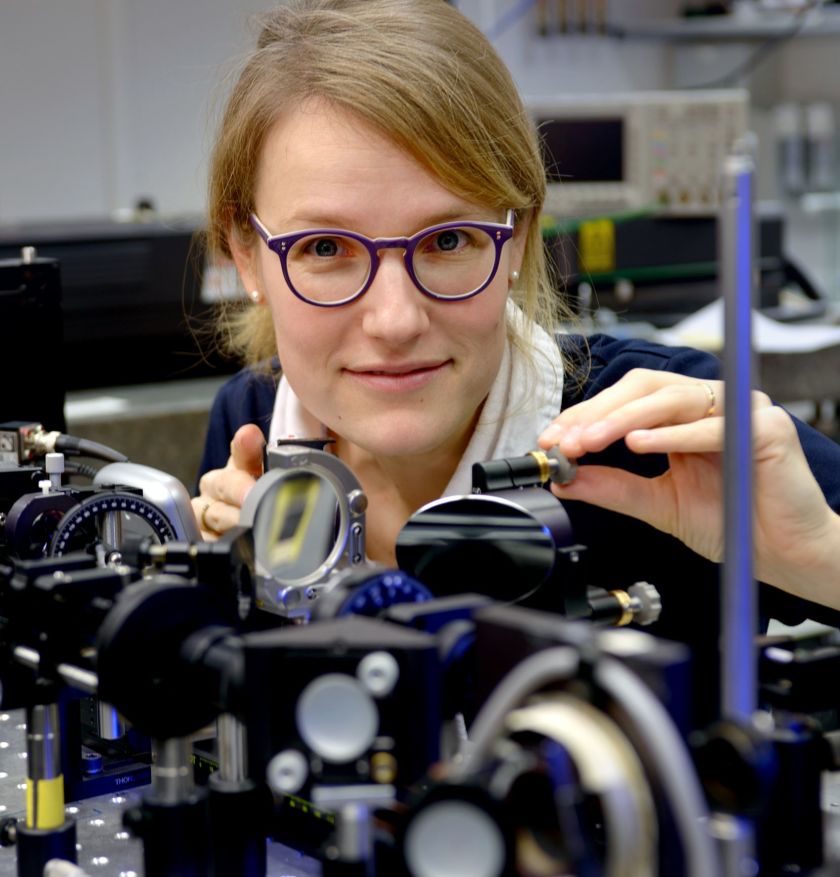Renske van der Veen heads new department "Atomic Dynamics in Light-Energy Conversion"

Renske van der Veen has a lot of experience with ultrafast x-ray measurements. © Irene Böttcher-Gajweski/MPIBC
From June 2021, Dr. Renske van der Veen is setting up a new research group at HZB. The chemist is an expert in time-resolved X-ray spectroscopy and electron microscopy and studies catalytic processes that enable the conversion of solar energy into chemical energy.
Dr. Renske van der Veen successfully obtained a Helmholtz Funding of first-time professorial appointments of excellent women scientists (W2/W3), whereupon the HZB has already initiated an S-W2 appointment procedure at TU Berlin. She has 14 years of experience in the field of ultrafast X-ray methods. "At BESSY II, I can apply and expand this experience in my research project," says van der Veen, emphasising, "The results could also contribute to the scientific case for BESSY III."
Renske van der Veen studied at ETH Zurich, received her PhD from the École Polytechnique Fédérale de Lausanne (EPFL) and conducted research at the California Institute of Technology, the Max Planck Institute for Biophysical Chemistry in Göttingen, and the University of Illinois, where she held an assistant professorship. Her research was honoured with the Sofja Kovalevskaja Award of the Alexander von Humboldt Foundation and the Packard Fellowship for Science and Engineering.
At HZB, Renske van der Veen is now looking forward to exchange with research groups working on related topics, from modelling ultrafast energy transfer, developing ultrafast techniques at BESSY II, to developing photoelectrodes and heterogeneous photocatalysts at the Institute for Solar Fuels.
arö
https://www.helmholtz-berlin.de/pubbin/news_seite?nid=22883;sprache=en
- Copy link
-
Battery research with the HZB X-ray microscope
New cathode materials are being developed to further increase the capacity of lithium batteries. Multilayer lithium-rich transition metal oxides (LRTMOs) offer particularly high energy density. However, their capacity decreases with each charging cycle due to structural and chemical changes. Using X-ray methods at BESSY II, teams from several Chinese research institutions have now investigated these changes for the first time with highest precision: at the unique X-ray microscope, they were able to observe morphological and structural developments on the nanometre scale and also clarify chemical changes.
-
BESSY II: New procedure for better thermoplastics
Bio-based thermoplastics are produced from renewable organic materials and can be recycled after use. Their resilience can be improved by blending bio-based thermoplastics with other thermoplastics. However, the interface between the materials in these blends sometimes requires enhancement to achieve optimal properties. A team from the Eindhoven University of Technology in the Netherlands has now investigated at BESSY II how a new process enables thermoplastic blends with a high interfacial strength to be made from two base materials: Images taken at the new nano station of the IRIS beamline showed that nanocrystalline layers form during the process, which increase material performance.
-
Martin Keller elected new president of the Helmholtz Association
The Helmholtz Association has appointed internationally respected US-based scientist Martin Keller as its new president. Her has lived in the United States for nearly three decades, during which he has held various scientific leadership roles at prominent institutions. Since 2015, Keller has directed the National Renewable Energy Laboratory (NREL) in Golden, Colorado. His term begins on 1.11. 2025.
